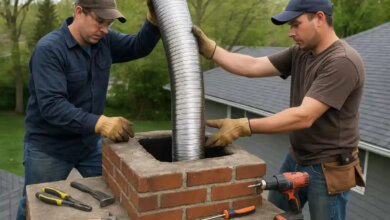Air Supported Structures Cost: A Complete Breakdown for 2025
Air Supported Structures Cost: A Complete Breakdown for 2025

In recent years, air supported structures have gained popularity as a modern, cost-effective solution for businesses, sports clubs, and event organizers. These dome-like facilities are supported by internal air pressure rather than traditional steel or concrete frameworks. From sports stadiums and warehouses to greenhouses and temporary event spaces, the demand for air domes has grown rapidly worldwide. But the main question remains: What is the actual Air Supported Structures Cost in 2025?
Understanding the Basics of Air Supported Structures
Air supported structures are large enclosures created with a high-strength fabric membrane that remains upright through continuous air pressure. They are equipped with mechanical systems like fans, blowers, HVAC units, and emergency power supplies. Compared to conventional buildings, they are faster to build, more flexible in use, and significantly cheaper.
However, when considering installation, one of the most critical aspects to analyze is the total cost, which goes beyond just construction expenses.
Initial Construction Costs
The Air Supported Structures Cost varies depending on the purpose, location, and level of customization. On average, prices range between $25 and $80 per square foot.
Factors affecting construction costs include:
-
Size of the dome – A small practice facility costs less compared to a full-sized stadium or industrial unit.
-
Membrane material – Basic single-layer fabrics are cheaper, while insulated, fire-retardant, or multi-layer membranes increase durability and cost.
-
Design complexity – Additional entrances, double-door airlocks, and high-end finishes raise the price.
-
Add-ons and customization – Heating, cooling, LED lighting, branding, and flooring systems can significantly add to the overall cost.
For example, a simple sports training dome may cost much less than a climate-controlled event space with full spectator seating.
Operational and Maintenance Costs
While the initial air supported structures cost is attractive, ongoing expenses must also be considered. Unlike permanent buildings, air domes rely on continuous airflow to maintain structure.
-
Energy consumption – Blowers and HVAC systems must run 24/7, which can impact electricity bills. However, insulated membranes can reduce heating and cooling costs by up to 30%.
-
Maintenance – Regular inspections, cleaning, and small repairs extend the lifespan of the structure.
-
Membrane replacement – On average, membranes last 15 to 20 years. Replacing a membrane is still much cheaper than rebuilding a permanent facility.
This balance of low construction costs but steady operating expenses is important for long-term financial planning.
Comparing with Traditional Buildings
Traditional brick-and-mortar buildings often take years to complete and cost significantly more. In comparison, air supported structures are 40–60% cheaper. Installation takes just weeks, which means businesses and sports organizations can start generating revenue almost immediately.
For example, instead of spending millions on a steel sports complex, a club could invest in an air dome at less than half the cost, while still offering year-round usage.
Long-Term Value of Air Supported Structures
The true value of air supported structures cost should not be judged only by upfront investment but also by flexibility and return on investment.
-
Sports clubs can operate year-round, unaffected by weather.
-
Warehousing companies can expand storage quickly without buying new land.
-
Event organizers can host concerts, exhibitions, and trade shows in professional-grade facilities at a fraction of the cost.
In addition, because they are portable, these structures can be relocated or dismantled when needed—something impossible with traditional buildings.
Conclusion
Air supported structures represent a game-changing solution in 2025 for organizations that value speed, flexibility, and affordability. While the Air Supported Structures Cost depends on factors like size, customization, and operational needs, they remain far more cost-effective than traditional buildings. For sports clubs, businesses, and event planners, these domes are not just a construction choice but a strategic investment into the future.
Future of Air Supported Structures
Looking ahead, the demand for air supported structures is expected to grow as industries and communities search for affordable, sustainable building options. With advancements in membrane technology, energy-efficient HVAC systems, and smart monitoring tools, the air supported structures cost will become even more competitive. Governments and sports organizations are already adopting these domes for quick infrastructure development. As awareness increases, air domes will no longer be seen as temporary alternatives but as reliable, long-term solutions. This evolution ensures that investing in air supported structures today means being prepared for the flexible infrastructure needs of tomorrow.
Environmental and Sustainability Benefits
Another important aspect to consider when analyzing air supported structures cost is sustainability. These domes use far fewer raw materials compared to concrete or steel buildings, which significantly reduces their carbon footprint. Many modern air domes also integrate energy-efficient insulation, renewable energy systems, and smart monitoring technologies to reduce operational costs. In addition, because they are relocatable, they prevent unnecessary waste associated with demolition or reconstruction. For organizations aiming to balance cost with environmental responsibility, air supported structures are an ideal choice. This combination of affordability, flexibility, and sustainability makes them a future-ready investment for 2025 and beyond.




